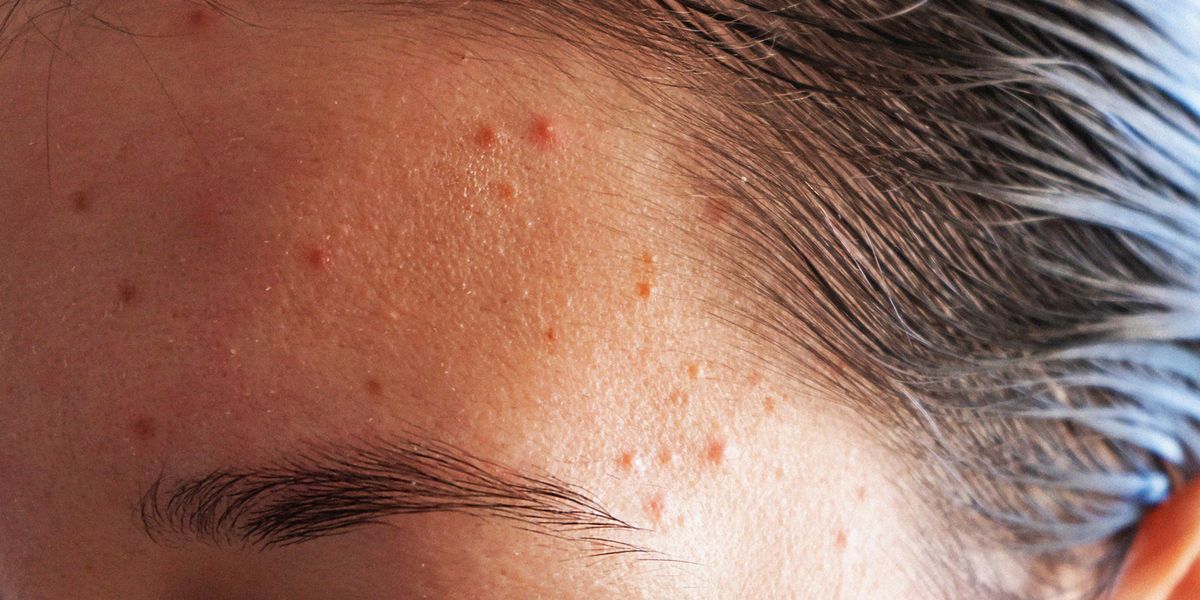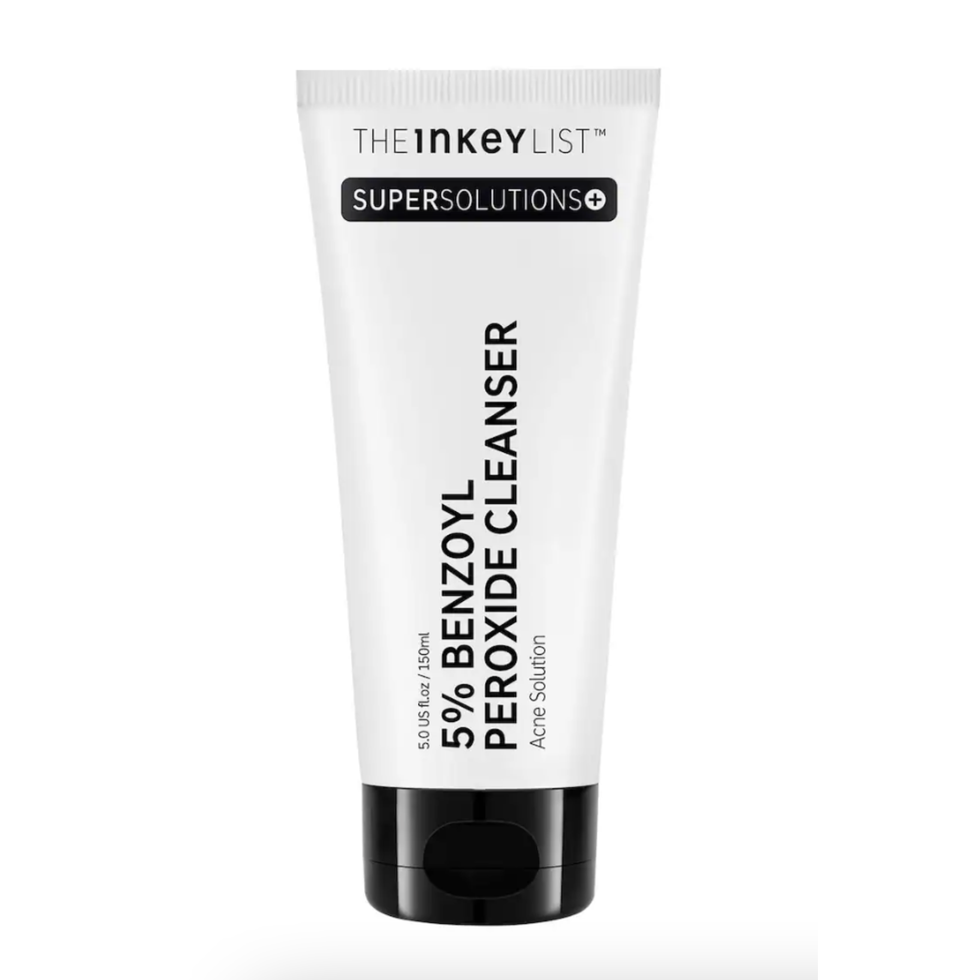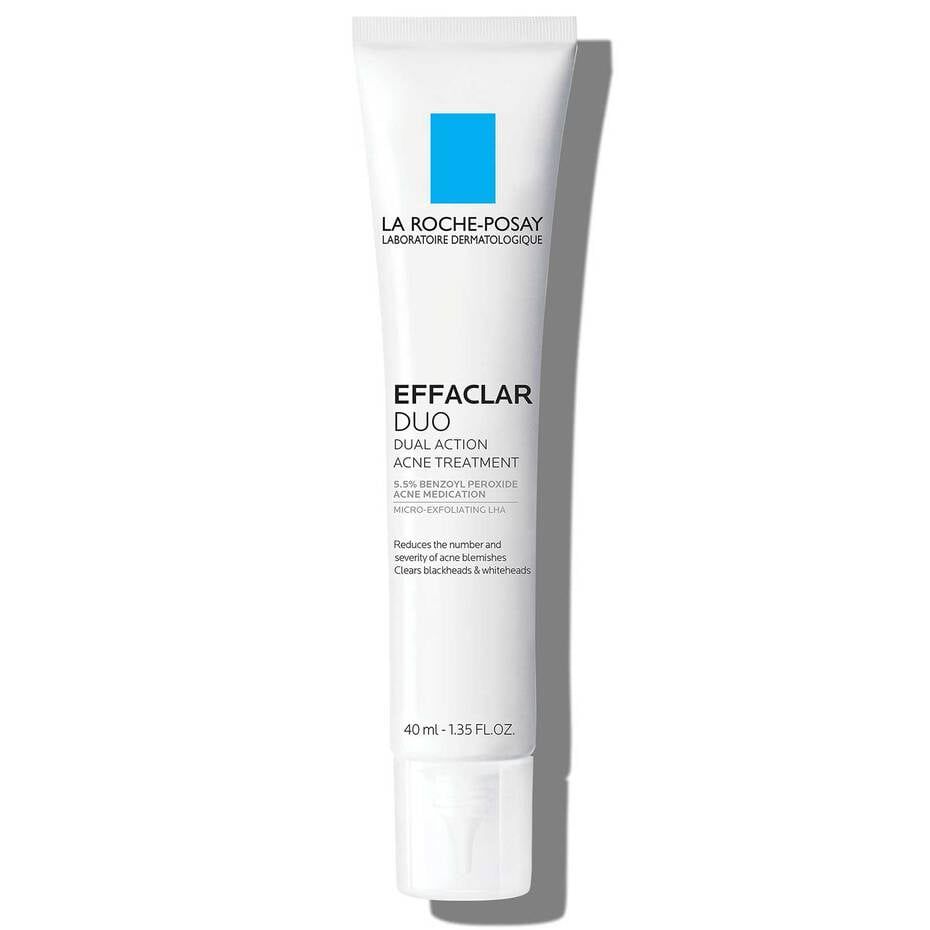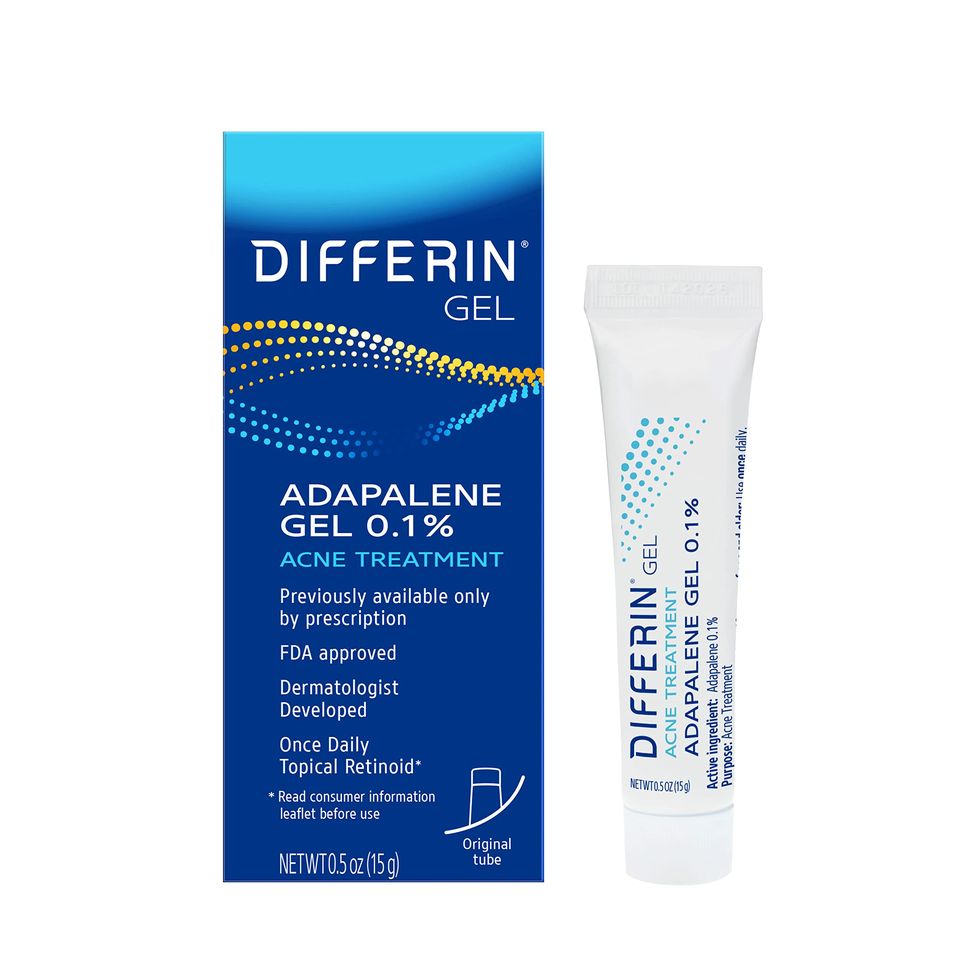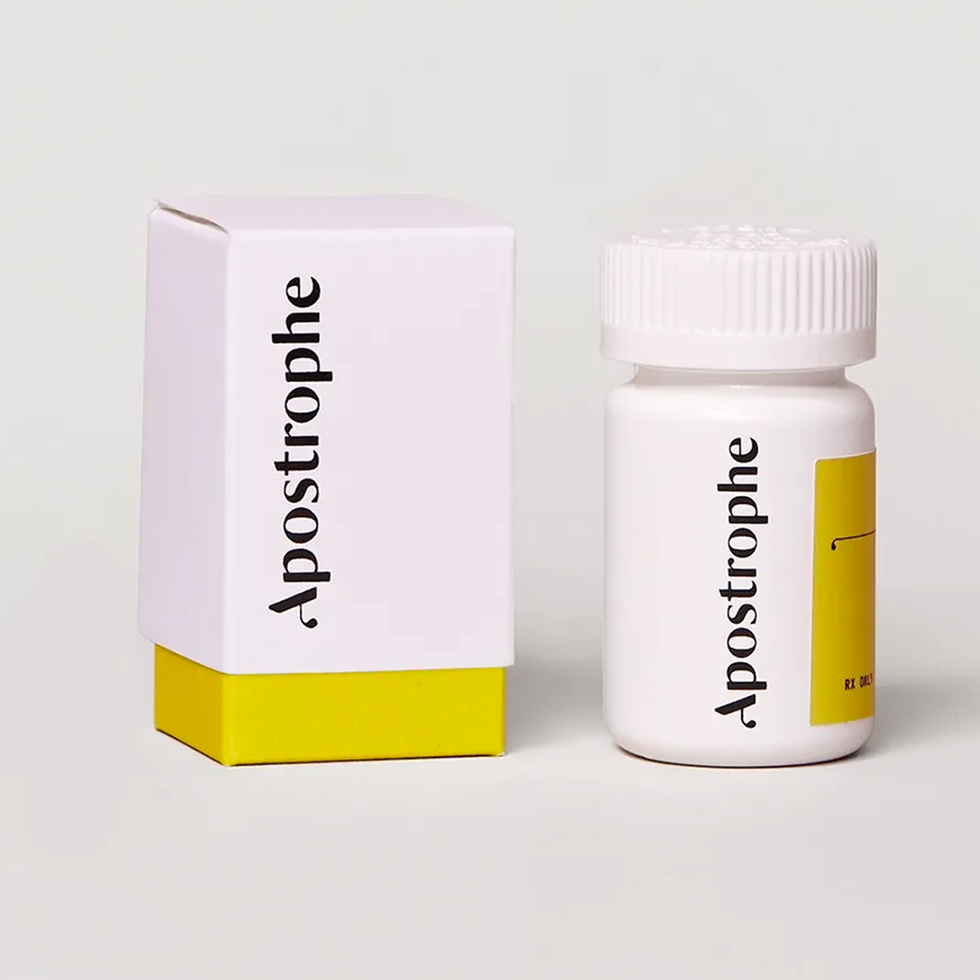These days my forehead is prime real estate for breakouts (we’re talking whiteheads, blackheads, cystic acne—the whole lot). After approximately five minutes of Google researching this annoying skin issue, I realized that forehead acne is apparently very normal, as the area is prone to excess oil production due to hormone fluctuations during puberty and in times of high stress (also known as: every day of my life). All of this new info led me to finally seek the guidance of the professionals to get to the bottom of my forehead acne.
After chatting with three trusted dermatologists (shout out to Kunal Malik, MD, Nava Greenfield, MD, and Hadley King, MD) I finally got some answers on what causes forehead acne. I’m here to share what I learned—along with all the best tips and tricks to both treat and prevent forehead acne, whether you’re dealing with clogged pores, blackheads, whiteheads, or a combination of all three.
What causes acne on the forehead?
Acne on your forehead is caused by your pores getting clogged with oil, mixing with dead skin cells and bacteria, and becoming inflamed—just like acne anywhere else on your face or body, explains Dr. Malik. And just like pimples everywhere else, “the primary culprits for excess oil production are genetics and hormones,” he says. Your hormones essentially trigger your body to overproduce oil, which can lead to bacteria growth and inflammation. And, fun fact, some people are just have more sensitive hormone receptors, leading to breakouts regardless of a menstrual cycle or puberty (tysm, DNA).
Other factors that can put your oil production into overdrive? Stressors (both day-to-day stress and biological stressors like systemic illnesses), your eating habits, and your environment. Mechanical factors (such as hats, headbands, touching your forehead, or not washing your pillowcase enough, for example) can also lead to sweat and sebum getting trapped on your forehead, causing zits. Another sneaky cause for forehead acne includes rich, greasy hair products containing olive or coconut oils, waxes, and butters (like shea butter) touching your forehead, as these can potentially clog your pores too.
What are the different types of forehead acne?
There are a few different types of forehead acne, according to Dr. Malik:
- Comedones: either blackheads or small whiteheads
- Papular acne: small red/purple/brown bumps on your skin’s surface
- Pustular acne: inflamed red/purple/brown bumps with white pus-like centers
- Nodulocystic acne: deep, underground blind pimples that are painful and inflamed
“Your forehead acne might be a combinations of the above,” says Dr. Malik. But they’re all formed a lil bit differently, according to Dr. Greenfield. Comedones, for example, generally occur when sweat and keratin build up in your pores and sweat ducts, creating a bump that either looks white or black, depending on if it’s been exposed to air or not. Meanwhile, papules and pustules are usually caused by bacterial overgrowth, triggering inflammation, which is why these pimples appear very red or purple/brown, depending on your skin tone. But, luckily, treating them all is fairly similar, which brings us to…
How do I get rid of the little bumps on my forehead?
To get rid of the little bumps on your forehead, or any type of acne on your forehead, you have two options: over-the-counter treatments and in-office prescriptions and procedures. At-home, Dr. King recommends looking for products with benzoyl peroxide, salicylic acid, and adapalene (a type of retinoid for acne), depending on the type of acne you have.
At-home treatments for forehead acne
Benzoyl peroxide
“Benzoyl peroxide has been a staple in acne treatment for over 60 years due to its effectiveness in addressing pustular and papular acne, as well as clogged pores,” Dr. King explains. It actually kills the acne-causing bacteria on your skin, helping to prevent zits as well as further inflammation. Try washing once a day with a benzoyl peroxide cleanser, or dabbing on a spot treatment when you get a zit. Because it can be drying, make sure to layer on a moisturizer after and avoid other strong chemical exfoliants or retinoids on the same night. Plus, make sure to dry your face with white towels and sleep on white pillowcases, as it can bleach fabrics).
Salicylic acid
Salicylic acid, on the other hand, is great for blackheads and whiteheads because it’s oil soluble, allowing it to go deep in your pores. Essentially, it helps dissolve the bonds that hold dead skin cells on your skin’s surface that gets trapped in your pores, says Dr. King. It’s also tolerated well for sensitive skin types at a 2 percent concentration, and can even be combined with benzoyl peroxide, topical retinoids, or AHAs.
Retinoids
“Topical retinoids are also excellent for combating acne and preventing clogged pores,” adds Dr. King. Retinoids (including adapalene, the gold standard for over-the-counter acne treatment) help speed up cell turnover, which in turn makes your skin cells shed faster and clog your pores less. The cell turnover process also helps slowly fade hyperpigmentation, notes Dr. King.
The downside to retinol and retinoids is that they can still be quite drying and irritating, so you need to start of using them low and slow. Try smoothing a pea-size dot over your entire face (no spot-treating here) once a week for one week, then twice a week for two weeks, then three weeks indefinitely. And if you’re feeling tight or splotchy, layer on a rich, soothing moisturizer (like one with aloe vera or allantoin) to help calm your skin.
In-office treatments for forehead acne
If you’re struggling with cystic pimples or your forehead acne is persistent and not responding to at-home treatments, make an appointment with a dermatologist (either IRL or through a telehealth service like Curology or Ro) to discuss what might be causing your acne and prescription-level methods. Your derm might recommend one or a combination of the below:
- Oral or topical antibiotics
- Spironolactone (oral or topical, like Winlevi)
- Hormonal birth control
- Tretinoin (like Aklief, Altreno, or Twyneo, which combines tretinoin and benzoyl peroxide)
- Prescription-strength azelaic acid (see: Finacea and Azelex)
- AviClear, an in-office laser treatment that “targets and shrinks your sebaceous glands, effectively curbing sebum production and addressing the fundamental cause of acne,” says Dr. Malik. (But FYI: It’s not usually covered by insurance and takes three sessions spaced a month apart)
- Accutane (or isotretinoin) for severe cases
Is forehead acne stress acne?
“Forehead acne can be stress acne, but not all cases of forehead acne are stress-related,” says Dr. Malik. When you experience stress or anxiety, your cortisol hormones spike. This occasionally happening is totally normal, but continued high cortisol levels caused by chronic stress releases something called “substance P,” or SP, a neurotransmitter found in your skin’s nerve endings that can signal to your oil glands to start overproducing sebum. This excess oil + increased inflammation = clogged pores and breakouts, says Dr. King. But keep in mind that stress acne can show up anywhere, not just your forehead, just as the acne on your forehead can be related to a variety of causes (see above).
How long do forehead pimples last?
Forehead pimples can last anywhere from two to three days to two to three weeks (or even months, with blind pimples and cystic zits). It really depends on the type of acne, as well as the types of products you’re using to help clear your skin, says Dr. King. “Smaller clogged pores might only persist for a few days, whereas inflammatory pimples could take a couple of weeks to improve,” she says. If you wish to expedite the resolution process, make an appointment with a dermatologist to develop a treatment plan (and consider incorporating one of the active ingredients above in the meantime).
Final thoughts:
Forehead acne can stem from anything, including not washing your pillowcase frequently enough to stressing out over an exam, to simply going through hormonal changes. So, if you’ve already tried salicylic acid and topical retinols, it may be time to just make an appointment with your dermatologist, specifically to discuss your forehead zits. You may feel alone in this battle, but it’s so common that you’ll be in and out of there, treatment plan in hand, lickety-split.
Meet the experts:
- Kunal Malik, MD, is a board-certified dermatologist at Spring Street Dermatology in New York, NY where he treats a variety of skin issues, including acne. He’s also an assistant clinical professor at Mt. Sinai Hospital.
- Hadley King, MD, is a board-certified dermatologist and clinical instructor of dermatology at the Weill Medical College of Cornell University.
- Nava Greenfield, MD, is a board-certified dermatologist at Schweiger Dermatology Group in Brooklyn, NY. She’s well-versed in treating acne and acne scars, and is also a clinical instructor at Mt. Sinai Hospital.
Why trust Cosmopolitan?
Iman Balagam is a beauty contributor at Cosmopolitan with nearly three years of experience writing beauty stories that range from laser hair removal services to mini flat irons. She’s an authority in all hair categories, but is an expert when it comes to laser hair removal, thanks to years of personally researching and testing different studios and services.
Iman Balagam is a freelance writer who has been in the beauty industry for nearly five years. She has written for and contributed to top women’s magazines and digital brands such as Harper’s BAZAAR, Allure, Byrdie, Elle and more. She will try *nearly* anything and spends a lot of time looking for new ways to store her beauty products in a small New York apartment.

